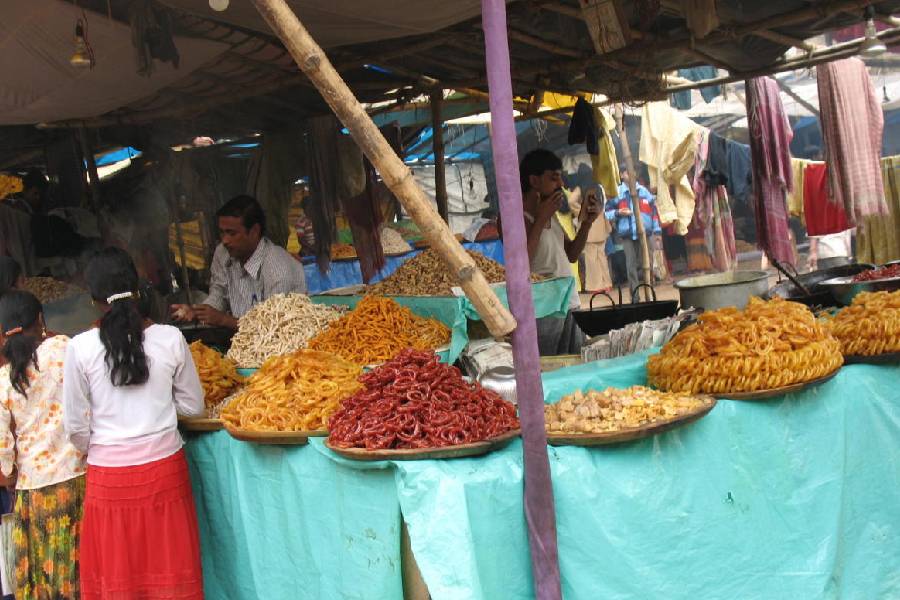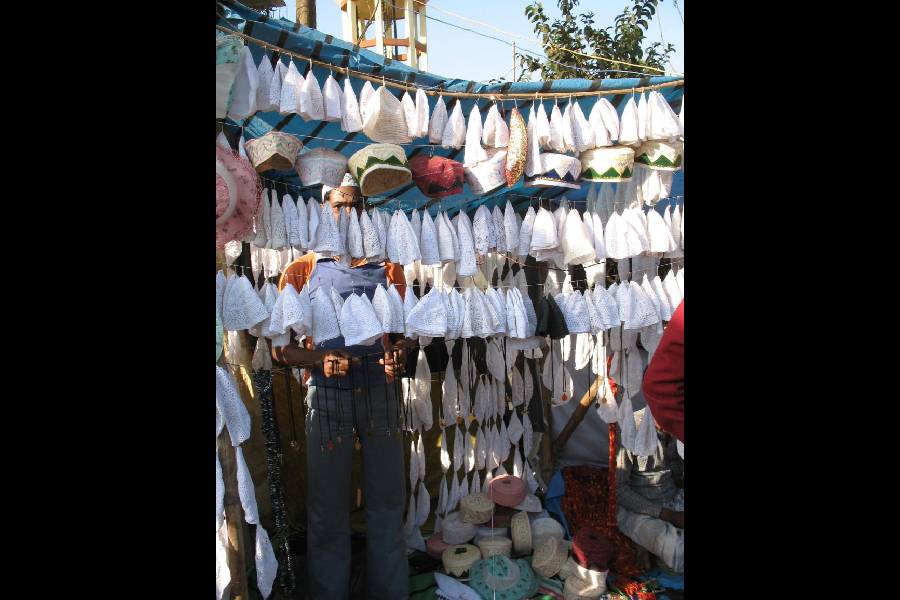In the last decade, melas have come to be the flavour of Calcutta. This winter just gone, the city witnessed over 250 melas — Hasta Shilpa Mela, Travel and Tourism Fair, Sabala Mela, Saras Mela, Tridhara Utsav, Maddox Square Mela, State Khadi Mela, Nale Jhole, Sinthir More Mela, Rajdanga Pithe Puli Utsav, Patuli Lok Sanskriti Utsav o Mela. Economist Achin Chakraborty says, “The melas that we see today are very different. The state government plays a huge role in facilitating these, pumping in money to make them a success. That is not what happened at the village fairs.”
Bengal has always had a rich tradition of melas, or fairs. They served as cultural, social as well as economic platforms where people from far and near would come to buy and sell regional products.
In a 1953 compilation titled Fairs and Festivals in West Bengal, the superintendent of census operations and joint development commissioner, West Bengal, A. Mitra, writes, “…no systematic regional inventory (of fairs) was attempted until the time of Dr Francis Buchanan-Hamilton in the beginning of the nineteenth century”. Buchanan-Hamilton was an East India Company surgeon, surveyor and botanist.
In the almanac published by the Vernacular Literature Committee of Calcutta in
1855-56, there is an account of 309 “famous fairs” in Bengal. From 1929, we have a count of 84 “important fairs”. The list was drawn up by the director of public health as a handbook of epidemic work. The police department maintained its own list of fairs, for law and order purposes.
Dipankar Ghosh, an anthropologist and a retired officer of the West Bengal Folk and Tribal Cultural Centre, says, “The mela is integral to a community.” He talks about the Gangasagar Mela and Tusu in Jangalmahal and their religious overtones. He continues, “And whenever there is a mela, regional economics gets a boost. The Mahishadal Mela in East Midnapore is known for jackfruits. During the Gostho Bihari Mela in Gobardanga in North 24-Parganas, spices are the centrepiece.”
He goes on about how fairs once played a role in binding the social structure: “Some part of the money earned post-harvest was spent in these fairs and the local artisans too got a chance to be part of the profits. The mela in that sense used to maintain economic balance in an agrarian society.”
And yet, for the sake of tradition or economic wisdom, melas happen across Bengal even today. There are about 5,000 to 6,000 of them every year happening across
23 districts.
Here’s a selection of melas in Hooghly district, which alone has 300 to 350 fairs every year.
Gojar Mela in Pandua
Begins mid-January and continues for a month. It is held under the Pandua Minar, is organised by Muslims but people of all faiths congregate. There are stalls selling glass bangles, ribbons and hair clips. Like any other mela, it comes with its merry-go-rounds and magic shows but the chief attraction is goja, fried dough dipped in sugar syrup.

A standard goja is 4-5 inches long, but karigars here make jumbo gojas. Legend has it that when Queen Victoria visited the Sovabazar Rajbari in north Calcutta, they ordered a two-foot-long goja.
Maachher Mela in Bandel’s Kestopur
Experts claim this mela is over 500 years old. Hooghly district has three major rivers — Hooghly, Damodar and Rupnarayan — all teeming with fish.
At the fair, fisherfolk sell their wares, and another lot sits with kerosene stoves and burners ready to fry or cook whatever fish one wants to eat.
Alurdomer Mela in Janda, Rajbalhat
This one coincides with Ganga Puja in January. By this time, the paddy has been harvested. Researcher and itinerant explorer of the districts Shakti Bhattacharya says, “Once Ganga Puja is over, people line up to eat alurdom, a preparation of potatoes, with muri or puffed rice. They make two varieties, one dry and one with gravy.”
Maatir Mela in Masat, near Dankuni
At this potters’ fair, the kumor sell their products — pots, glasses, bowls and plates. “The old ones are ritually broken into small pieces and used to fill potholes or for some other repair work,” says Bhattacharya. Though clay utensils have gone out of use, buying new ones at this time of the year is a ritual. This mela has a footfall of nearly 20,000.
Patha Bolir Mela in Inchura, Pandua
Observed every August, this 300-year-old fair is dedicated to Manasa, the goddess of snakes. People come from near and far with sacrificial goats. Last year, 8,500 goats were slaughtered.

Against the backdrop of this religious gathering, a mela is organised. People sell furniture, fishing nets and other fishing accessories at this fair.
Tupir Mela in Furfura Sharif
Held in March, this is a fair where tupis are sold. Netted ones, embroidered ones, some with chikankari work.

Peddlers come from within Bengal — Basirhat and Murshidabad — and also from Bihar, Assam and Uttar Pradesh with their special designs.
Transgenders’ Mela in Singur, Basubati
The story goes that a pir in Basubati decided that a day ought to be earmarked for transgenders to enjoy a fair. Every March, the fair comes alive with stalls selling ittar, knickknacks and local delectables.

But the last few years, the date of the mela has not been made public after there were incidents wherein miscreants beat up people from the transgender community.











